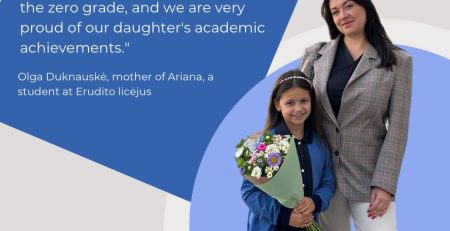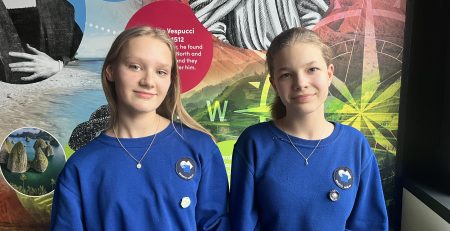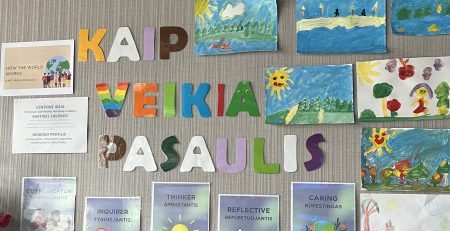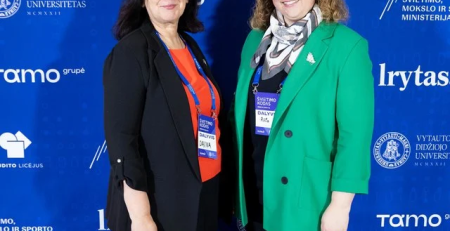Three things which will disappear in future schools: marks, disciplines, classrooms
Does it resemble a scene from a science fiction film? The only inaccuracy here regards the future – future of schools or countries which already have these developments in place. It is not these changes that seem strange in light of how our lives altered but the education system which has not changed over a century. Thus, the objective of such education innovations is not to introduce diversity to education and make students more interested, as it is usually the case, but to eliminate the gap so that schools correspond to the expectations of modern society and changing organisations.
Obviously, the essence of educational paradigm has been transforming. The foundation of conventional education was built to provide students with knowledge, to prepare them for predictable choices in life and for formalised professional environment, whereas all this is no longer present in today’s world. Contemporary education systems set completely different objectives: how to prepare students for undefined situations so that they are able to quickly find necessary knowledge and apply it in different human systems and mobile environments.
Single phenomenon – multiple disciplines
What do schools and lessons which are not broken down by subjects look like? Topics which combine several subjects are analysed instead of individual disciplines. For example, the topic on the European Union integrates geography, economics, history, culture and languages. Finland is a leading country in spreading this educational philosophy. It set the objective of switching to discipline-free teaching by 2020 and expanding its applicability during the last academic year – upper secondary pupils may choose phenomena to explore and knowledge to deepen with respect to the professional career they want to pursue.
Teaching individual subjects forms algorithmic thinking and there is not space for humans in the era of artificial intelligence. Therefore, learning how to analyse topics, explore phenomena, create new solutions enable discovering and combining various knowledge, use and improve abilities in unique combinations which are difficult to digitalise. In other words, distancing from disciplines should empower the re-discovery through applied and linking aspects, as the history of innovations reveals that the majority of them are created through connecting the solutions which already exist. This needs well-developed creative thinking whose formation could be reasonably identified as the main objective of future education.
Almighty marks – are they facing the end of the era?
There is ever-growing talk at the moment about a negative impact of marks on pupils’ motivation. Marks are still easier to understand for many people, this is why it is the main criterion of the assessment of learning quality. Parents, teachers and pupils themselves live by this illusion, therefore, there is no surprise that marks become the main learning goal.
Could we accommodate such a diverse and complex phenomenon as learning in a scale of several numbers? The modern educational process is oriented towards the strengthening of social competence and thinking skills, and it is difficult to mark them. In the end, a mark is only a snapshot. For a sustainable approach to learning, it is important to focus on the essence of learning which needs to foster intellectual curiosity rather than competition – to take an interest in and be enriched with both knowledge and skills.
Giving up marks is apparently a difficult shift which needs to encompass the entire education system – for universities also organise the admission process taking account of the students’ results. The situation, however, is changing in this respect as well. Singapore, where mark-based rating was generally acceptable and considered the main criterion of success, declared that it was gradually renouncing this system in 2018. As Ong Ye Kung, the Minister of Education of Singapore, said, learning is not a competition.
When classroom walls disappear
Learning through traditional methods does not reflect the reality and future professional environment of modern society. It is difficult to keep focus in the classrooms due to physical passivity and unidirectional information; moreover, the environment where all pupils sit at their desks is very much out of character of the working environment. In the working environment, employees become extremely mobile, they combine working from the office with working from home; hierarchic structures are diminished in modern organisations, and their place is taken by project teams and interactive work models. Therefore, people look for ways to transform traditional classroom environments or make them extinct even. Oerestad gymnasium in Denmark is one of the first schools in the world which gave up the classroom system. The whole school building is designed as one large classroom which may be divided into different, easy-to-transform learning spaces. Other schools are trying to move part of learning to an actual working environment – law firm, hospital, advertising agency or somewhere else with respect to the interests of individual pupils, thus enabling pupils to see actual work in the actual world from the inside.
In addition, cancellation of classrooms destroys both physical and social walls between the groups and moves learning to open and practical spaces which provoke the application of knowledge instead of trying to memorise it. Elimination of disciplines allows for better integration of knowledge in the overall context when solving complicated tasks, whereas elimination of marks makes room for other motivating factors which lead people towards growth.
These changes are fundamental and they must take place quickly as society, business and technologies are changing more and more rapidly and people who are able to adapt, act universally and learn fast will be the epicentre.














